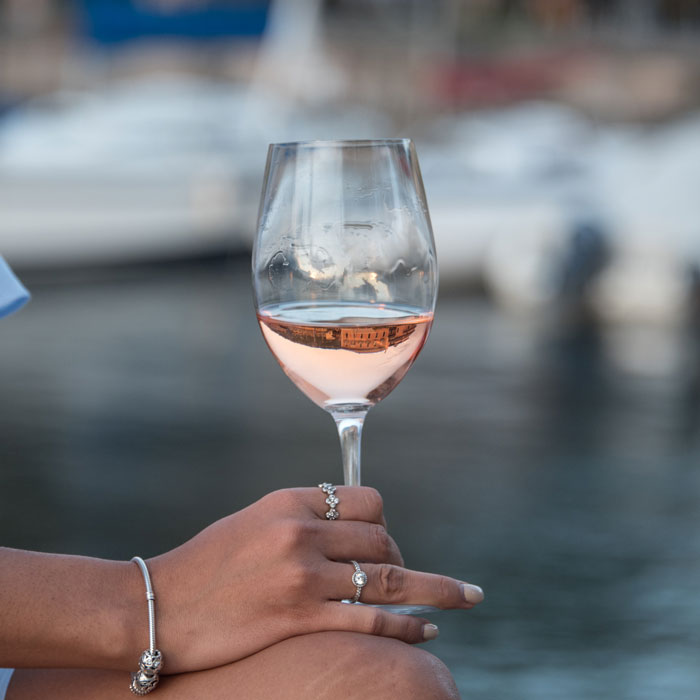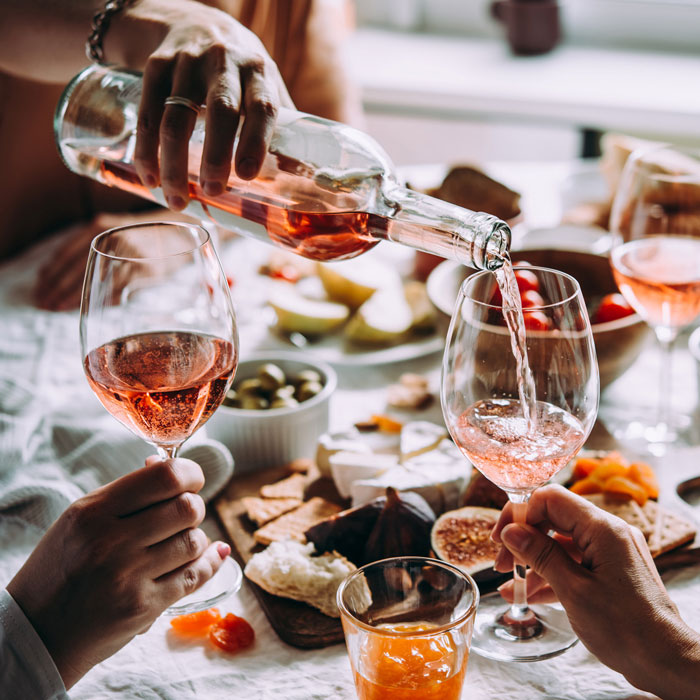"Drink Pink" is the motto of the German Wine Institute (DWI) for 2022. Whether at ProWein or at upcoming events, the focus this year is on rosé wines. With this, the DWI is paying tribute to a worldwide trend that does not seem to be abating. Only recently, the DWI reported that sales of German rosé wines abroad had developed very positively. There is a clear trend towards higher-quality rosé wines, which are not primarily seen as quick thirst quenchers but as wines in their own right. But it is not only German rosés that are booming: Prosecco Rosé, Chiaretto di Bardolino, the wines of the Côtes de Provence - they are all experiencing growing demand, especially among the younger female generation. Rosé wine is in demand.

Die-hard red wine lovers accuse rosé wines of lacking everything that can be extracted from the grape skins: colour, aromas, structure, character. Moreover, rosé is a technical wine - the terroir characterises it much less than its production method. It is a product without a real identity, interchangeable, its origin secondary.
But the sales figures speak for themselves: according to the DWI, rosé now accounts for 13 per cent of total sales in Germany, and the trend is upwards. Because light, delicate, fruity, uncomplicated - that's how wine should taste for many people today. There is hardly a wine merchant who is not currently running a rosé campaign. As a summer wine, as a terrace wine, as an aperitif, as an expression of joie de vivre and lightness - the list of positive attributes with which rosés are advertised is long. And indeed, sales of rosé wines increase exponentially with the temperatures. The closer the holidays come, the more rosés are drunk. As if a glass of rosé is a short mental excursion to warmer climes, to Provence or Lake Garda.
The most famous growing areas for rosé wines are undoubtedly in the south of France. Above all, the 20,000-hectare Côtes de Provence appellation clearly sets the tone as the largest rosé producer in the world. For many, the wines produced here represent the ideal rosé type against which all other rosé wines must measure themselves. Over 90 percent of the appellation is dedicated to the production of rosés.
Among the most expensive rosés in the world are the Clos du Temple by winemaker Gérard Bertrand from Narbonne in Languedoc for about 200 euros, the Étoile from Domaines Ott for about 130 euros or the Garrus from Château d'Esclans, also from Provence, which costs about 100 euros. Equally hyped are the wines of Miraval, whose top rosé Muse de Miraval now costs over 250 euros per bottle.
But the Tavel appellation on the southern Rhone is also known for its high-quality rosés. Just a few weeks ago, it was announced that the renowned French Domaine E. Guigal (Côte-Rôtie) had taken over the Château d'Aqueria in the Tavel region with 68 hectares of vineyards. According to general director Philippe Guigal, the AOC Tavel is the excellence of rosé. He is planning to reposition the entire Tavel appellation and to communicate it differently in order to give it the status it deserves.
In order to raise the status of rosé wines internationally, the "Association Internationale des Rosés de Terroirs" (AIRT) was founded in Tavel in March 2021. The aim of the association is to facilitate access to high-quality rosé wines for traders and wine lovers and to organise tastings at home and abroad.

To catch up with their French counterparts, many Italian winegrowers have also followed suit and are now increasingly focusing on rosé. Only a few appellations have such a tradition in Italy - one of them is the Bardolino wine-growing region on Lake Garda. Here, rosé has always been produced alongside red wine, but since the "Rosé Revolution" initiated by the consortium in 2014, Chiaretto di Bardolino has been steadily gaining in importance. It now accounts for 42 percent of the total production. Angelo Peretti, the director of the protection consortium for Chiaretto and Bardolino, predicts an increase of Chiaretto production to 60 percent, which corresponds to about 15 million bottles. The success proves the winemakers right; in the first two months of 2022 alone, sales increased by 26.7 percent compared to the previous year.
The development of Prosecco Rosé, introduced in 2020, is also remarkable. Of the 627.5 million bottles of Prosecco DOC produced, 71.5 million bottles had already been filled with Prosecco Rosé in 2021. The demand for this new version of Prosecco far exceeds the supply.
Whether Piedmont, Tuscany or Sicily, even the winegrowers in the classic growing regions for red wines full of character now offer rosés made from Nebbiolo, Sangiovese and Nerello Mascalese because they want to keep up with the times.

So a lot is happening in terms of rosé quality. The awareness of the top vintners is changing, the standards are rising. Today, winemakers are taking much more care in vinification, playing with barrique ageing and maceration times in order to extract more colour and structure. Because the demand for high-quality rosé wines, which can also be good accompaniments to food, continues to rise.
One convinced rosé wine maker is the Austrian Pia Strehn from Burgenland. According to Strehn, it is at least as difficult to make an excellent rosé as a good red or white wine. A good rosé has to be independent and expressive. To achieve this, winemakers have to find the best terroirs and suitable grape varieties.
More and more winegrowers worldwide are turning to rosé: this will change a lot in the coming years. The number of wines full of character from a wide variety of appellations is growing steadily. Rosé, once only offered cheaply as an unpretentious wine, has a new future.